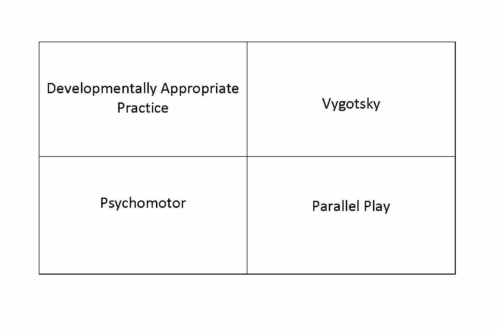This is part two in an eight-part series on e-learning technical vocabulary systems. Read part one.
Career and technical education (CTE) teachers have quickly adapted to leading lectures, discussion and question-and-answer sessions in virtual classrooms. They have replaced traditional learning environments for most of us. A lot has changed but some things remain the same. Teachers still struggle with student engagement and productive talk. It is more important than ever to learn virtual differentiation techniques.
Many CTE teachers use note cards to teach students how to study with note cards they create themselves. But how do we engage students with those stacks of cards from a distance? In part 2 of our series on e-learning vocabulary systems, we explore a strategy that challenges students to think critically, be creative and communicate.
Let’s use a simple example to get started. Take these terms from different units in an early childhood education (ECE) vocabulary set, covered August–February. This is important to note. Do not pull terms from the same units. The multi-part methodology being used to develop systematic vocabulary instruction is not accidental. When vocabulary lessons are systematized, there is a high potential for student achievement gains (Hattie, 2009).
>nbsp;

Research on forgetting supports Hattie’s assertion. Simply put, our memories are dominated by both primacy and recency effects (Myers >amp; DeWall, 2015). We have a natural tendency to recall the first and last information learned. What does this mean for vocabulary systems? Teachers support learning when we design deliberate activities to pull technical vocabulary terms spanning the whole year.
Note Card Chunking
Gist: Note Card Chunking, to encourage productive talk, is both collaborative and cooperative. Students are challenged to define terms in their own words. The teacher then leads students in discussion and provides feedback on written definitions. Presents a great opportunity for re-teaching to build deeper connections.
When to use: This exercise is an excellent tool for conducting frequent knowledge checks.
Make it work for e-learning.
- Ask students to prepare scrap paper for a vocabulary activity. Share a set of terms that appear unconnected (e.g., ECE terms listed above).
- Say, “When I say go, you will have exactly 90 seconds to create a thought or write a sentence that shows you can connect any two of the terms below. You may need to get creative.”
- When the given time has elapsed, ask each student to share their connections made. Encourage all students to interact and discuss. Some students will love the challenge, trying to connect as many terms as possible. Some may even take up friendly competition: Who can make the most connections?
See the strategy in action.
https://www.youtube.com/watch?v=viqpfKO4tSs>amp;t=25s
Sandra Adams is a teacher and instructional coach with the Career Academy, Fort Wayne Community Schools. She co-wrote the ACTE-supported book But I’m NOT a Reading Teacher!: Literacy Strategies for Career and Technical Educators with Gwendolyn Leininger, where further detailed explanations of the strategies in this series can be found. Email her.






